| Author |
Message |
|
D. S. Smith
Location: Central CA Joined: 02 Oct 2011
Posts: 236
|
 Posted: Fri 07 Feb, 2014 3:02 pm Post subject: Rapiers with wide fullers? Posted: Fri 07 Feb, 2014 3:02 pm Post subject: Rapiers with wide fullers? |
 |
|
Hello all, I'll be honest, I've never really been a fan of rapiers, sabers, or other complex hilt swords. I've never held one in person, but they often look way too fragile compared to the "battle ready" look of the earlier sword styles.
When going through Albion Europe's Flickr site for the thousandth time, I came across their Maestro Line "Marozzo" practice sword:
http://www.albion-swords.com/swords/albion/ma...arozzo.htm
Here are the pictures from Albion US's website:


I understand that the wide fuller on the blade of this practice sword is due to function, not form. It's my understanding that they designed this sword with the wide fuller so that it could have the balance and feel of the original type, while keeping thick edges for safety. My question is were there historical examples of complex hilt swords like this that actually had wide fullers on the blades? And if so, does anyone currently make them?
I really like the look. In fact the wide fuller blade really makes this the first complex hilt sword that I really love the aesthetics of. I've seen some examples of complex hilt swords that had wider blades, but none with a wide fuller. I've seen narrow fuller versions, and I've seen wider Type XV blade versions, but none with a wide fuller. It makes me wonder if any existed, and if not...why not?
Thanks in advance for any input.
|
|
  |
 |
Nathan Robinson
myArmoury Admin


|
 Posted: Fri 07 Feb, 2014 4:53 pm Post subject: Posted: Fri 07 Feb, 2014 4:53 pm Post subject: |
 |
|
Just a few comments and examples:
Compound-hilted swords are not by definition fragile at all. Most aren't dainty or flimsy or wimpy. They're more often very rigid and stout. Oftentimes, compound-hilted swords are beefy and heavy compared to a similarly proportioned cross-hilted swords.
I think you framed your sentence well, but for those who might not get the distinction I'd caution not to clump all compound-hilted swords into the same discussion/sentence/context/category as rapiers. Rapiers are are specific type of sword that happen to have a complex/compound hilt. There is however a tremendous variety to compound-hilted swords ranging from very lightweight purpose-specific weapons to very heavy war swords.
To the issue of fullers one must understand that adding a compound hilt to a sword creates weight in the hilt. As such, oftentimes a stout blade with a good amount of mass is required to make a dynamically sound weapon. This goes to demonstrate my first point about these swords not being fragile or dainty!
Of course, as blade lengths increase the need to remove mass from them over the length might be required and so fullering might be a means to do this. There is a tremendous variety to fullering on compound-hilted swords including ones with wide and long fullers, multiple (3, 4 or even 5) fullers, and many more configurations.
I wouldn't consider the Albion Maestro Line "Marozzo" practice sword as having a particularly wide fuller. Some katzbalgers have fullers practically as wide as the blade itself! I'd also not call the Marozzo a rapier.
 Attachment: 76.14 KB Attachment: 76.14 KB
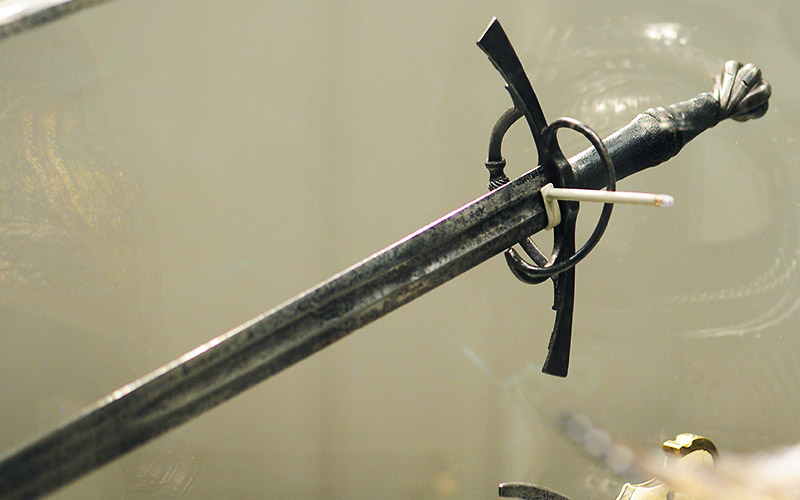
 Attachment: 47.19 KB Attachment: 47.19 KB
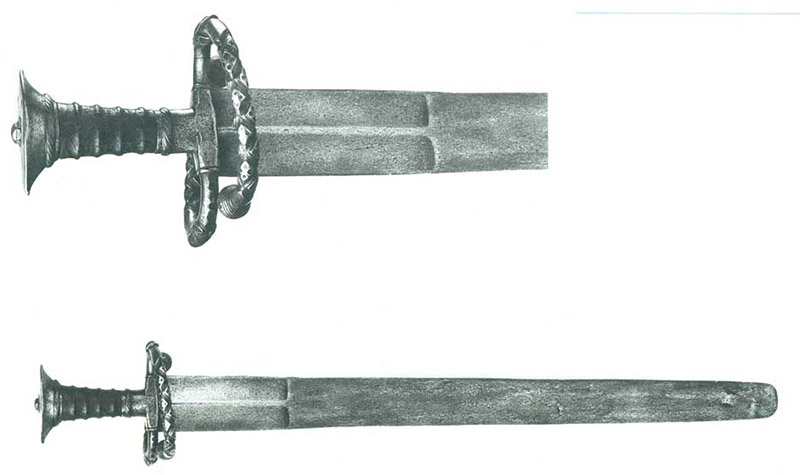
 Attachment: 70.23 KB Attachment: 70.23 KB
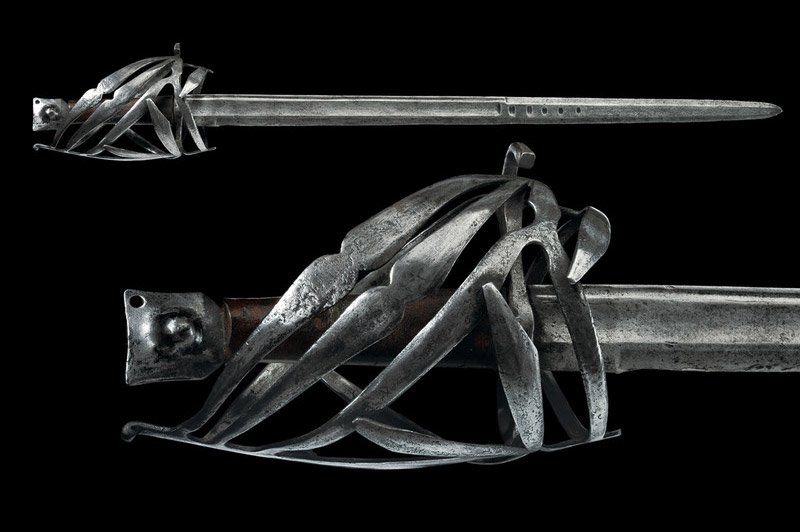
 Attachment: 38.13 KB Attachment: 38.13 KB
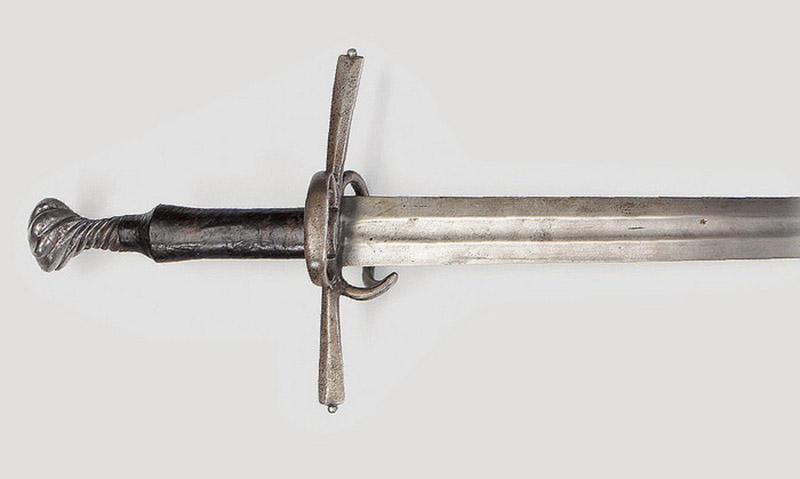
 Attachment: 25.56 KB Attachment: 25.56 KB
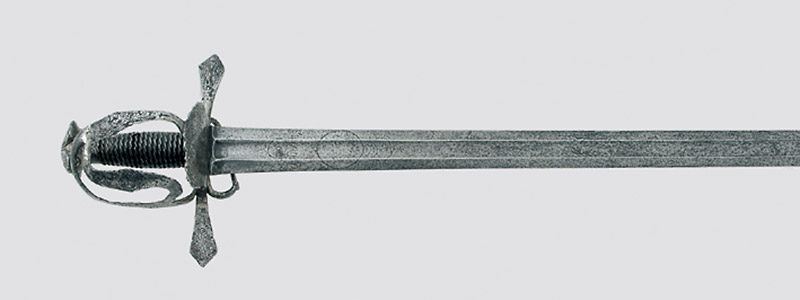
 Attachment: 87.38 KB Attachment: 87.38 KB

.:. Visit my Collection Gallery :: View my Reading List :: View my Wish List :: See Pages I Like :: Find me on Facebook .:.
|
|
    |
 |
|
D. S. Smith
Location: Central CA Joined: 02 Oct 2011
Posts: 236
|
 Posted: Fri 07 Feb, 2014 8:16 pm Post subject: Posted: Fri 07 Feb, 2014 8:16 pm Post subject: |
 |
|
Nathan, thanks so much for the reply. Every time I read a thread on this forum I am reminded how much I DON'T know about medieval weaponry.  I appreciate the clarification about the robustness of various complex hilted swords. You're right, when I compare them, a saber or cutlass don't seem the least bit fragile like a rapier or foil. I'm basing this solely on appearance since I've never held one. I appreciate the clarification about the robustness of various complex hilted swords. You're right, when I compare them, a saber or cutlass don't seem the least bit fragile like a rapier or foil. I'm basing this solely on appearance since I've never held one.
The top photo you linked is phenomenal. What a gorgeous sword! Before I wrote this thread, I was looking at my Albion Sempach hanging on the wall next to me, and thinking how cool it would be to mate that blade to a complex hilt exactly like the Marozzo. Then I read your post and the very first photo I see is a Type XVII blade like the Sempach, on a complex hilt.
I've seen the wide fullers you're speaking of, and you're right that I probably should have called the Marozzo's fuller "medium width". I was picturing in my mind the Arms and Armor "German Rapier", which has a very narrow fuller, which made the Marozzo's seem wide by comparison: http://armor.com/rapier163.html
The Marozzo is such a fine looking weapon in many ways. As I said, I like the combination of the blade and the complex hilt, but I also like the shiny blade against the pewter colored hilt and light grip color. If Albion is listening, stick a narrow Type XVII blade on the Marozzo hilt and you'll have at least one very happy buyer. 
The third sword down is amazing. It could have come right off the pages of a fantasy novel.
|
|
  |
 |
|
Don Stanko
|
 Posted: Sat 08 Feb, 2014 12:41 pm Post subject: Posted: Sat 08 Feb, 2014 12:41 pm Post subject: |
 |
|
I found a more traditional style rapier hilt with a wide fuller in the blade. The sword is quite long, over 100 cm and the blade is just under 4 cm wide. The fuller is very wide and almost the length of the blade. The blade is marked with a crude running wolf symbol. I'm sure there are other examples.
 Attachment: 42.09 KB Attachment: 42.09 KB
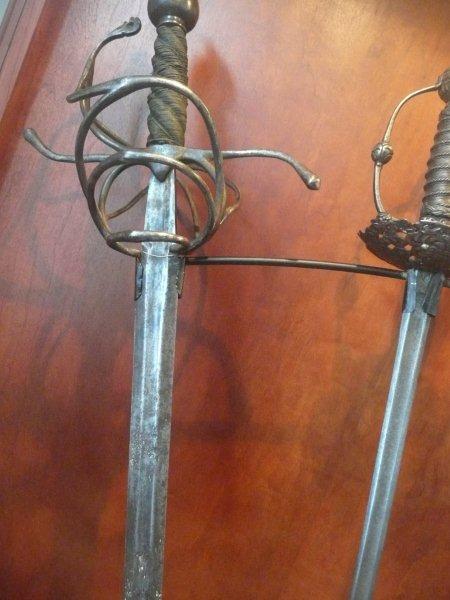
 Attachment: 38.8 KB Attachment: 38.8 KB
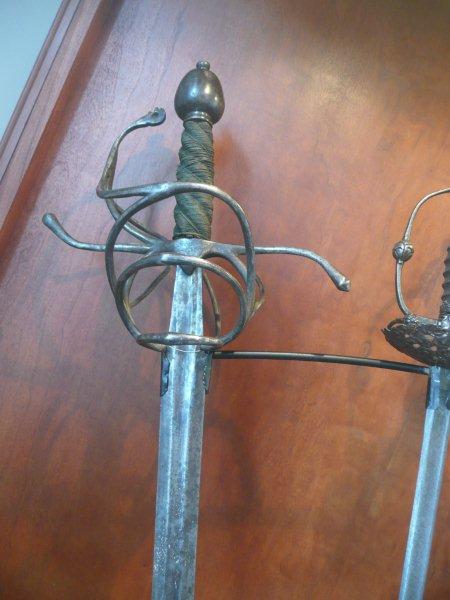
|
|
  |
 |
|
Theo Squires
|
 Posted: Mon 24 Feb, 2014 6:40 pm Post subject: Re: Rapiers with wide fullers? Posted: Mon 24 Feb, 2014 6:40 pm Post subject: Re: Rapiers with wide fullers? |
 |
|
| D. S. Smith wrote: | Hello all, I'll be honest, I've never really been a fan of rapiers, sabers, or other complex hilt swords. I've never held one in person, but they often look way too fragile compared to the "battle ready" look of the earlier sword styles....
My question is were there historical examples of complex hilt swords like this that actually had wide fullers on the blades? And if so, does anyone currently make them?
I really like the look. In fact the wide fuller blade really makes this the first complex hilt sword that I really love the aesthetics of...
Thanks in advance for any input. |
Hello. There are large variety of complex hilted swords as Nathan has said. It sounds like you're interested in the heftier side swords / cut-and-thrust swords. If you are looking for more, you may be interested in Danielli Armouries, who makes many different such swords. http://www.danelliarmouries.com/index.php/cus...ide-swords.
As for complex-hilted swords seeming flimsy, I'd like to draw your attention to the Dresden rapier by Arms and Armour (http://www.myArmoury.com/swor_aa_dres.html).

Huge, isn't it? Though no fuller, obviously, and I think it's been discontinued.
And this complex-hilt sword by Vladimir Cervenka is also quite nice and has a reasonable fuller. Not sure if that's your cup of tea, of course.

I'm quite partial to complex-hilts myself, but like you prefer a heftier sword. Later longswords and hand-and-a-half swords from ~1600 tend to be like this, as are cavalry swords from that era.
|
|
   |
 |
|
D. S. Smith
Location: Central CA Joined: 02 Oct 2011
Posts: 236
|
 Posted: Mon 24 Feb, 2014 9:12 pm Post subject: Posted: Mon 24 Feb, 2014 9:12 pm Post subject: |
 |
|
Don and Theo, thanks so much for the great photos and info.
Those are some fine looking swords. I should clarify though, my tastes are much more centered around simple hilt designs, like the traditional medieval era ones, not complex. The point I was making is that a fullered, heftier blade really improves the look of a complex hilted sword for me. As much as I love the simple hilted swords, having a complex hilt would be a very nice addition to balance out the collection, and I can't think of one I'd rather have than one with a fullered blade. I You are right that my taste in complex hilted swords is way more along the lines of side swords and war swords.
|
|
  |
 |
|
Lafayette C Curtis
|
 Posted: Fri 28 Feb, 2014 2:28 am Post subject: Posted: Fri 28 Feb, 2014 2:28 am Post subject: |
 |
|
This link has many examples of complex-hilted longswords or two-handed swords with fullers:
http://www.zornhau.de/dinkelsbuhl-first-steel/
I think the main reason why reproductions of such blades are few and far between is because their sheer variety precludes the identification of distinct general "types" that can be used as a reference in designing reproductions and such. The end result is that the reproductions are mostly concentrated on the high-end custom segment of the market.
(That being said, I think Windlass, Del Tin, and Lutel all have complex-hilted, fullered models in their lineups, though I'm not sure since I'm just working from memory and may have confused the production models with their DIY modifications).
|
|
  |
 |
|
Will Phillips
|
 Posted: Sat 29 Feb, 2020 7:47 am Post subject: Posted: Sat 29 Feb, 2020 7:47 am Post subject: |
 |
|
My apologies about replying to a six year old thread, but Nathan - or any others - can you speak to the provenance of this sword that was shown above?
Those Styrian baskets and half-baskets are a particular interest of mine.

|
|
  |
 |
|
|
You cannot post new topics in this forum
You cannot reply to topics in this forum
You cannot edit your posts in this forum
You cannot delete your posts in this forum
You cannot vote in polls in this forum
You cannot attach files in this forum
You can download files in this forum
|
All contents © Copyright 2003-2025 myArmoury.com — All rights reserved
Discussion forums powered by phpBB © The phpBB Group
Switch to the Basic Low-bandwidth Version of the forum
|

